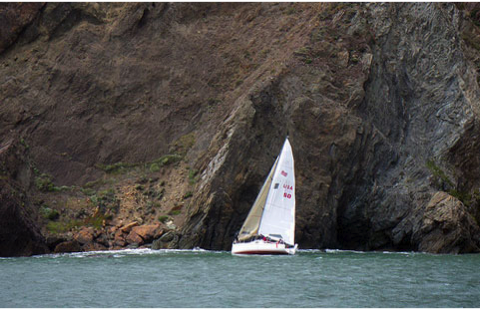Magnus Larsson gave a cool (pun intended) presentation at TEDGlobal 2009 called “Cities past and future” where he suggested an innovative way to stop desertification. You can see him in action here and here.
First, let me just clarify that I am all in favor of desserts and this in no way clouds my ability to comment on the urgent need to stop deserts from spreading. Ahem.
The idea is to support the green-belt concept, a barrier of trees and vegetation, with a giant wall made of sand.
The sand can be fused together using methods pioneered by anti-earthquake engineering and seismic research in California that is essentially a form of “bacterial concrete”. Bacteria (Bacillus pasteurii – microorganisms that create sandstone by precipitating calcite) can be used at low expense to generate a giant wall from sand. This not only protects the trees and provides a more significant barrier to wind and heat, but also should remain even as the trees may succumb to local demand for firewood or construction materials. In fact, this method coupled with solar innovations and enforcement penalties may make trees no longer desirable for construction or heat, so you get an overall risk reduction in several areas.
Some say this is poetry…
Larsson espouses “aggregation as a design strategy”:
in one way, all design is aggregation. even the most austere minimalistic design usually produces an aggregation of elements that weren’t there before. on one level, it is hard to do anything in the world without adding something to it: a trace, a movement; something.
sand is the very epitome of aggregation. a single grain of sand is almost nothing: a splinter of rock, something that once was something, but has now become a memory of that thing. but put myriad grains together and you get entire landscapes, deserts, the earth. you get fascinating forms and emergent patterns. you get possibilities, potentials, a fluid material from which to build our structures. and you get a force to do it for you: as the sand is carried by the wind, “all” we have to do is make sure we design with this in mind. work with the aggregation, not against it. allow the aeolian forces to put the sand in motion, allow saltation to do its thing, and then, when the sand has aggregated into a shape that we like, use an intelligent strategy for how to solidify it, petrify it, freeze it into a solid state that speaks of that one moment in time.
To me, of course, that is poetry.
Self-healing concrete is another interesting application.

